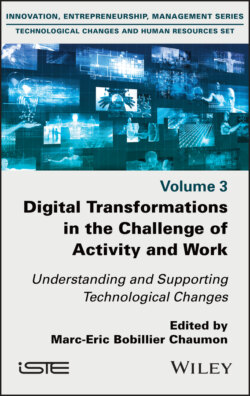Читать книгу Digital Transformations in the Challenge of Activity and Work - Группа авторов - Страница 33
2.4. Conclusion
ОглавлениеCollaborative platforms and DESNs are not, strictly speaking, technological innovations, since they aggregate technologies that have been in existence since the late 1990s. However, the combination of technologies associated with possible organizational uses profoundly changes the rules of interactions, social codes and collaboration dynamics, which are more fluid and less constant over time.
The principles lauded in the context of the implementation of networks have a major impact on the organization of work, its context and its intelligibility for individuals by multiplying the standards, rules, interlocutors, tools and purposes of work. In this way, work activity loses its centrality under the influence of the mechanics of social networks. At the same time, it intensifies and densifies in terms of flows, volumes and contexts. This induces constant changes in the structuring of the activity and in its organization over time (Engeström 2008a). The asynchronous collaborations resulting from the use of DESNs therefore imply identifying and understanding the expectations of colleagues, knowing how to make various points of view converge and to implement the methods for working collectively and being able to inscribe these actions, however fragmented they may be, in the overall history of individual and collective activity. Under these conditions, the power to act is possible because it reflects the ability of professionals to master this new collaborative environment with a certain degree of re-creation of the situation.
Giving meaning to work in these poly-contextual and multi-mediated situations therefore requires professionals to develop new skills for evaluating and anticipating future collaborative activity. In our opinion, it relies on the ability of professionals to identify a sufficient degree of shared collaborative intentionality.
